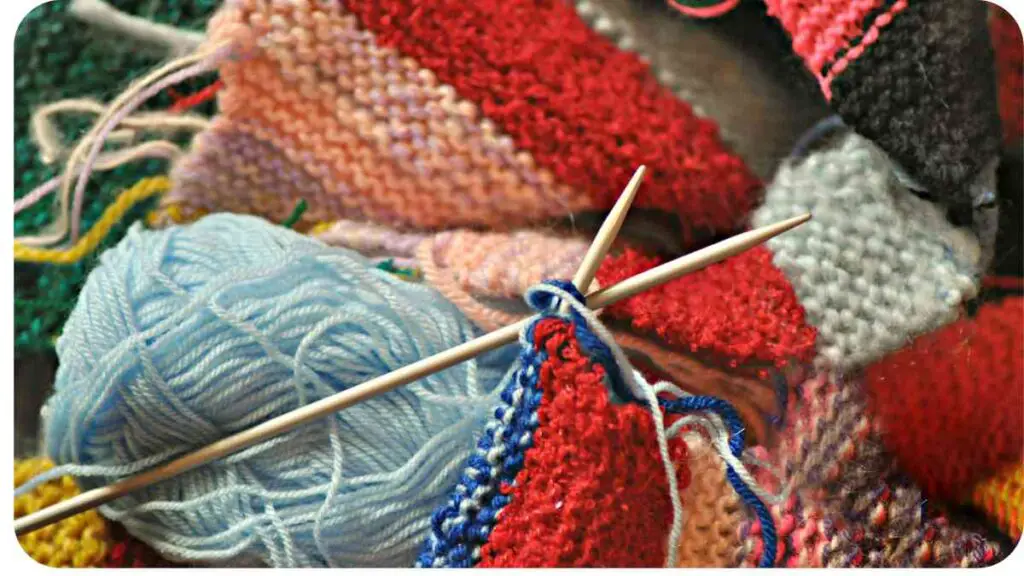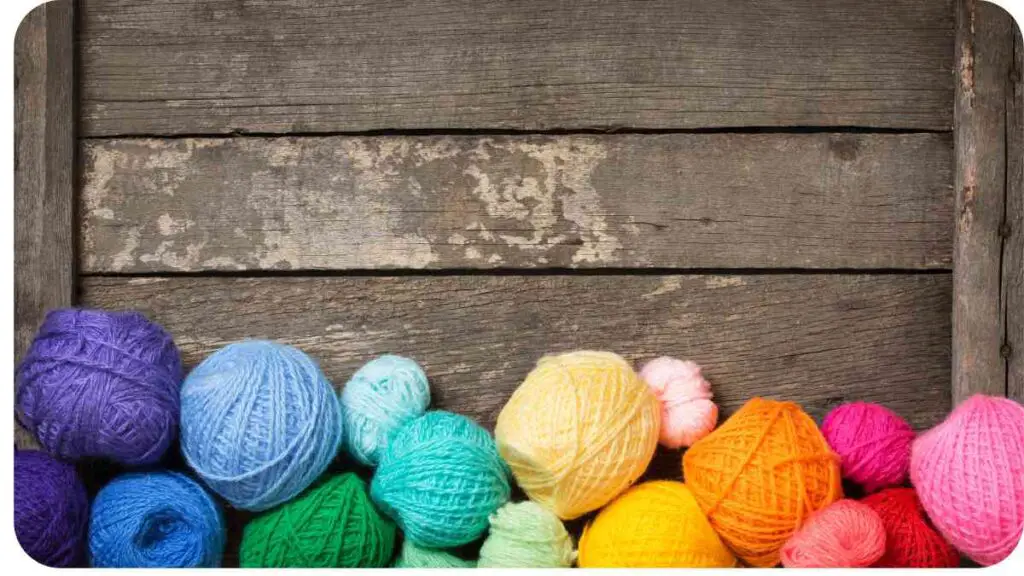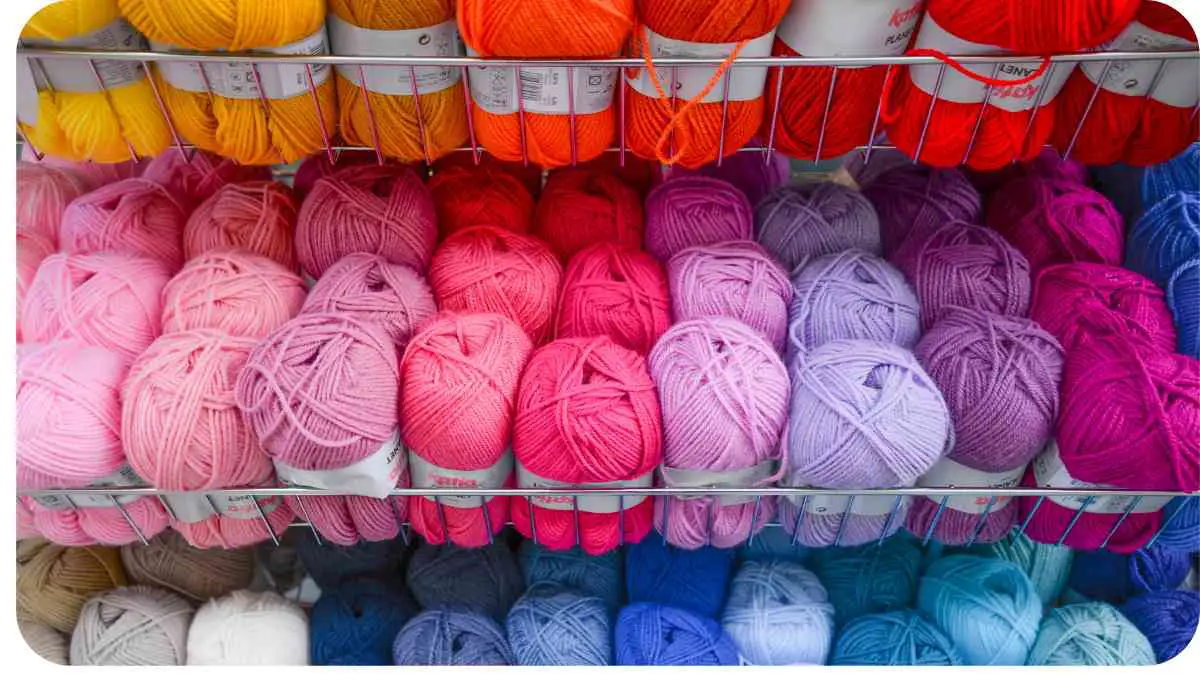Welcome! As a seasoned professional in the world of knitting and crochet, I understand the frustration that comes with yarn pilling. Nothing is more disheartening than spending hours creating a beautiful project, only to have it marred by unsightly fuzz balls.
But fear not! In this comprehensive guide, I will share my insights and expertise to help you combat yarn pilling and keep your creations looking pristine.
| Key Takeaways |
|---|
| Understand the causes of yarn pilling |
| Choose high-quality yarn with tightly spun fibers |
| Properly store and care for your knitted or crocheted items |
| Utilize pilling-resistant techniques during your projects |
| Regularly maintain your finished projects |
| Manual removal, sweater stone/pumice stone, or electric pill remover can fix pilling |
| Test swatches and alternate yarn skeins to prevent uneven pilling |
| Lint rollers and adhesive tapes are useful for removing surface fuzz |
| Consider blending yarns for reduced pilling |
| Take care of your hand tools to avoid excessive tension on the yarn |
2. Understanding Yarn Pilling
Before delving into the solution, it’s essential to understand what yarn pilling is. Yarn pilling refers to the formation of small, fuzzy balls or pills on the surface of a knitted or crocheted fabric. These pills are formed when loose fibers in the yarn tangle together and rise to the surface. The more friction a garment or fabric undergoes, the more likely it is to experience pilling.
3. Causes of Yarn Pilling

To effectively tackle yarn pilling, it’s important to identify its underlying causes. Several factors contribute to the occurrence of pilling, including:
| Causes of Yarn Pilling |
| Poor-Quality Yarn |
| Loose or Weak Spinning |
| Yarn Composition |
| Fiber Length |
| Fabric Construction |
| Friction and Wear |
Poor-Quality Yarn: Using low-quality yarn that consists of loosely spun fibers is more likely to pill. These fibers are not adequately bound together, causing them to disengage from the yarn strand and form pills.
Loose or Weak Spinning: Yarn that has undergone inadequate spinning gives rise to loose fibers, which easily shed and pill.
Yarn Composition: Different fibers have varying levels of pilling propensity. Natural fibers like wool and angora tend to pill more than synthetic fibers such as acrylic.
Fiber Length: Short fibers present in some yarns are prone to coming loose and forming pills. Longer fibers, on the other hand, are more resilient and tend to pill less.
Fabric Construction: Knitted or crocheted fabrics with looser stitches or more textured surfaces create an environment where pills can easily form.
Friction and Wear: Frequent rubbing and abrasion cause fibers to loosen and pill. Areas that experience increased friction, such as cuffs and underarms, are more susceptible to pilling.
4. Preventing Yarn Pilling
Now that we understand the causes, let’s explore some preventive measures to minimize the occurrence of yarn pilling in your projects.
Choosing the Right Yarn
Selecting high-quality yarn that is less likely to pill is the first step in preventing pilling. Look for yarn that is tightly spun, made from long fibers, and composed of synthetic materials like acrylic or nylon. Consider the fabric construction you desire and choose yarn that complements it. For example, smoother yarns are ideal for tighter stitches and intricate designs.
Proper Storage and Care
Proper storage and care play a significant role in preventing pilling. Store your finished projects in a clean, dry place away from excessive heat and sunlight. When it comes to washing your items, follow the care instructions on the yarn label. Gentle handwashing or using a delicate cycle on your washing machine can help preserve the integrity of the fibers and reduce pilling.
Using Pilling-Resistant Techniques
Incorporating pilling-resistant techniques while working on your projects can help minimize or even eliminate pilling. Avoid excessive tension while knitting or crocheting, as it can strain the fibers and contribute to pilling. Additionally, using tighter stitch patterns, such as cables or seed stitches, can help create a more durable fabric that is less prone to pilling.
Regularly Maintain Your Projects
Once your project is completed, regular maintenance is crucial to prevent pilling. Gently handwash or machine wash your items as required, and don’t forget to reshape them while damp. Brushing your finished projects with a soft-bristled brush can help remove any loose fibers that contribute to pilling. Regularly inspect your items for signs of pilling and tackle them promptly before they worsen.
5. Fixing Yarn Pilling

Despite our best efforts, yarn pilling can still occur. Luckily, there are effective methods to fix it, depending on the severity of the issue. Let’s explore some techniques for removing fuzz balls and restoring the beauty of your knitted or crocheted items.
Manual Removal
For mild pilling, manually removing the pills is often sufficient. Gently hold the fabric taut and use a pair of sharp scissors or your fingers to carefully snip or pick off the pills. Take care not to cut the fabric itself or pull too forcefully, as this may cause damage.
Sweater Stone or Pumice Stone
A sweater stone or pumice stone is another handy tool for tackling pilling. Rub the stone gently across the fabric, focusing on areas with the most pills. This abrasive action helps lift the loose fibers and remove the pills. Remember to be gentle and check your progress frequently to avoid overdoing it.
Electric Pill Remover
If you’re dealing with heavy pilling or have a large area to address, an electric pill remover can be a time-saving option. These small handheld devices feature rotating blades or screens that cut or shave off the pills as you glide them over the fabric. Use caution not to press too hard or stay in one spot for too long, as this can harm the fabric.
6. Additional Tips for Dealing with Yarn Pilling
1. Test a Swatch
Before embarking on a large project, create a small test swatch using the selected yarn. Observing how the swatch behaves can provide valuable insights into its pilling tendencies and help you make informed decisions about potential modifications.
2. Alternate Yarn Skeins
When using multiple skeins of yarn in a project, alternate between skeins every couple of rows or rounds. This technique helps distribute any variations in yarn composition and reduces the likelihood of uneven pilling across the finished piece.
3. Embrace Lint Rollers and Tape
Lint rollers and adhesive tapes are effective tools for swiftly removing superficial fuzz from your garments. They are particularly useful for tackling loose fibers and lint that may accumulate on the surface of knitted or crocheted items and contribute to pilling.
4. Consider Blending Yarns
Experimenting with yarn blends can be beneficial when aiming for reduced pilling. Combining fibers with different properties can create an optimal balance between durability and softness, resulting in fewer pills.
5. Take Care of Your Hand Tools
Keep your knitting needles, crochet hooks, and other hand tools in good condition. Rough or snagged tools can cause excessive tension on the yarn, resulting in increased pilling. Regularly inspect and maintain your equipment to ensure smooth and enjoyable crafting sessions.
7. Conclusion
Yarn pilling is a common issue that can detract from the appearance of your knitted or crocheted projects. By understanding the causes and implementing preventive measures, you can minimize pilling and prolong the lifespan of your creations. Choosing high-quality yarn, employing pilling-resistant techniques, and following proper care and maintenance practices will go a long way in preventing and managing yarn pilling.
In instances where pilling occurs, manual removal, the use of a sweater stone or pumice stone, or an electric pill remover can effectively restore the beauty of your fabric. Additionally, implementing additional tips such as testing a swatch, alternating yarn skeins, and utilizing lint rollers or adhesive tapes can further assist you in managing and reducing pilling.
Remember to approach yarn pilling with patience and care, as rushing or using excessive force can cause unintended damage to your projects. By incorporating these strategies and techniques, you can enjoy your knitted or crocheted creations for years to come, maintaining their integrity and aesthetics.
Harnessing my years of experience and expertise, I hope this guide has provided you with valuable insights, tips, and practical solutions to address yarn pilling. May your future knitting and crocheting adventures be filled with beautiful, pill-free results!
Happy crafting!
Further Reading
If you want to delve deeper into the topic of yarn pilling and learn more about preventing and managing it, here are a few recommended resources:
- How to Stop Yarn Pilling: This informative tutorial from AllFreeKnitting provides step-by-step instructions and helpful tips to prevent and stop yarn pilling in your knitting projects.
- Is Your Yarn Pill-Prone?: Interweave’s article explores the characteristics of yarn that are more likely to pill and offers insights into choosing the right yarn for your projects.
- 10 Must-Know Tips to Prevent and Remove Wool Pilling: Perfectly Basics provides a comprehensive guide with valuable tips and techniques for preventing and removing pilling specifically in wool fabrics.
FAQs
Here are some frequently asked questions about yarn pilling and their corresponding answers:
Q: Why does yarn pilling occur?
Piling occurs when loose fibers in the yarn tangle together and rise to the surface due to friction and wear.
Q: How can I prevent yarn pilling?
To prevent yarn pilling, choose high-quality yarn, properly care for your projects, use pilling-resistant techniques, and maintain your items regularly.
Q: Can I remove pills from my knitted or crocheted items without damaging them?
Yes, you can manually remove pills by gently snipping them with scissors or picking them off with your fingers. Using a sweater stone or pumice stone, or using an electric pill remover are other effective methods.
Q: How do I know if a certain yarn is prone to pilling?
Some factors that contribute to yarn pilling include poor quality, loose spinning, fiber composition, fiber length, fabric construction, and friction. Researching the yarn or consulting reviews can give you insights into its pilling tendencies.
Q: Is pilling common in all types of yarn?
The likelihood of pilling varies depending on the yarn’s quality, fiber composition, and construction. Natural fibers like wool and angora tend to pill more, while synthetic fibers like acrylic are less prone to pilling.
Please refer to the provided resources and the FAQs above for more in-depth information on dealing with yarn pilling.

My name is Hellen James, and I’m a crochet and knitting expert. I’ve been crocheting since I was just a kid, but I started taking it seriously when I realized that it was a great way to de-stress and relax. Now that I have kids of my own, I love teaching them how to do it too!


